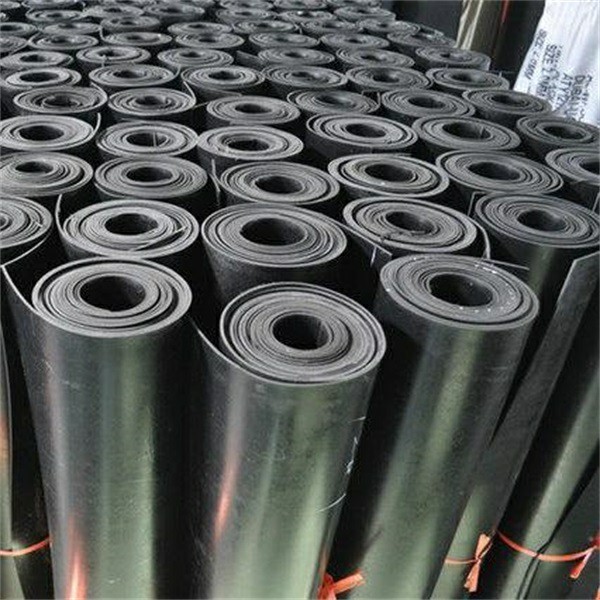Understanding Geomembrane Liners: Essential Insights for Construction Projects
Release time:
2025-10-09
Geomembrane liners are a crucial component in the construction and civil engineering sectors, particularly when it comes to environmental protection and containment strategies. These impermeable membranes are designed to prevent the migration of fluids through soil and rock, making them essential for various applications in construction projects. One of the primary uses of geomembrane liners is in
Geomembrane liners are a crucial component in the construction and civil engineering sectors, particularly when it comes to environmental protection and containment strategies. These impermeable membranes are designed to prevent the migration of fluids through soil and rock, making them essential for various applications in construction projects.
One of the primary uses of geomembrane liners is in landfill construction and management. They serve as barriers to prevent leachate, a potentially harmful liquid that can contaminate groundwater, from escaping into the environment. By utilizing geomembrane liners, contractors can create a safe and effective containment system that protects both the land and surrounding ecosystems.
Additionally, geomembrane liners are widely used in water management systems, such as ponds, reservoirs, and canals. These liners help to minimize water loss due to seepage, ensuring that water resources are conserved and effectively managed. Moreover, they can also be employed in aquaculture to maintain water quality and support healthy environments for aquatic life.
The construction of geomembrane liners involves various materials, including high-density polyethylene (HDPE), linear low-density polyethylene (LLDPE), and polyvinyl chloride (PVC). Each material offers specific characteristics, such as UV resistance, chemical durability, and flexibility, which can be tailored to meet the unique requirements of different projects. When selecting a geomembrane liner, it's essential to consider factors such as the intended use, environmental conditions, and regulatory requirements.
Installation of geomembrane liners is another critical aspect to consider. Proper installation is vital to ensure the liner functions effectively and achieves its intended purpose. This process typically involves site preparation, material handling, and welding techniques to create a seamless barrier. Furthermore, regular inspections and maintenance are necessary to identify any potential issues, such as punctures or tears, that could compromise the liner's integrity.
In addition to their practical applications, geomembrane liners also contribute to sustainable construction practices. By preventing contamination and reducing resource loss, they help promote environmental stewardship within the construction industry. As sustainability becomes increasingly important, the use of innovative materials like geomembrane liners can enhance a project's overall performance and reduce its ecological footprint.
In conclusion, geomembrane liners are invaluable tools in construction and civil engineering. Their ability to provide effective containment, water management, and environmental protection makes them a preferred choice for many projects. By understanding the benefits and considerations associated with geomembrane liners, construction professionals can make informed decisions that lead to successful and sustainable outcomes.
One of the primary uses of geomembrane liners is in landfill construction and management. They serve as barriers to prevent leachate, a potentially harmful liquid that can contaminate groundwater, from escaping into the environment. By utilizing geomembrane liners, contractors can create a safe and effective containment system that protects both the land and surrounding ecosystems.
Additionally, geomembrane liners are widely used in water management systems, such as ponds, reservoirs, and canals. These liners help to minimize water loss due to seepage, ensuring that water resources are conserved and effectively managed. Moreover, they can also be employed in aquaculture to maintain water quality and support healthy environments for aquatic life.
The construction of geomembrane liners involves various materials, including high-density polyethylene (HDPE), linear low-density polyethylene (LLDPE), and polyvinyl chloride (PVC). Each material offers specific characteristics, such as UV resistance, chemical durability, and flexibility, which can be tailored to meet the unique requirements of different projects. When selecting a geomembrane liner, it's essential to consider factors such as the intended use, environmental conditions, and regulatory requirements.
Installation of geomembrane liners is another critical aspect to consider. Proper installation is vital to ensure the liner functions effectively and achieves its intended purpose. This process typically involves site preparation, material handling, and welding techniques to create a seamless barrier. Furthermore, regular inspections and maintenance are necessary to identify any potential issues, such as punctures or tears, that could compromise the liner's integrity.
In addition to their practical applications, geomembrane liners also contribute to sustainable construction practices. By preventing contamination and reducing resource loss, they help promote environmental stewardship within the construction industry. As sustainability becomes increasingly important, the use of innovative materials like geomembrane liners can enhance a project's overall performance and reduce its ecological footprint.
In conclusion, geomembrane liners are invaluable tools in construction and civil engineering. Their ability to provide effective containment, water management, and environmental protection makes them a preferred choice for many projects. By understanding the benefits and considerations associated with geomembrane liners, construction professionals can make informed decisions that lead to successful and sustainable outcomes.
Previous Page






